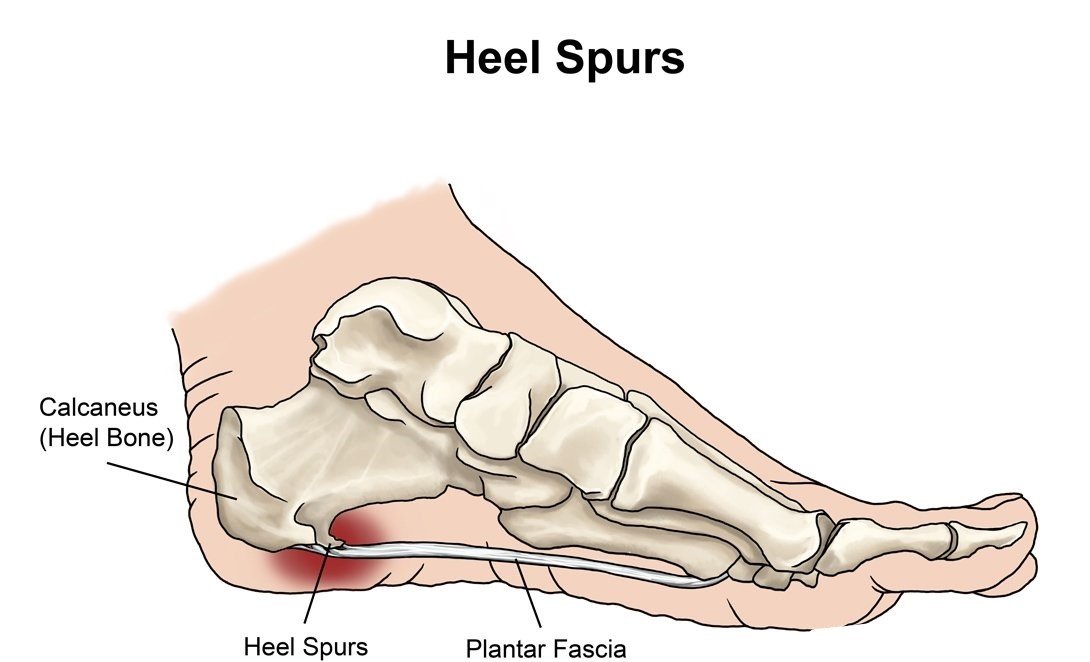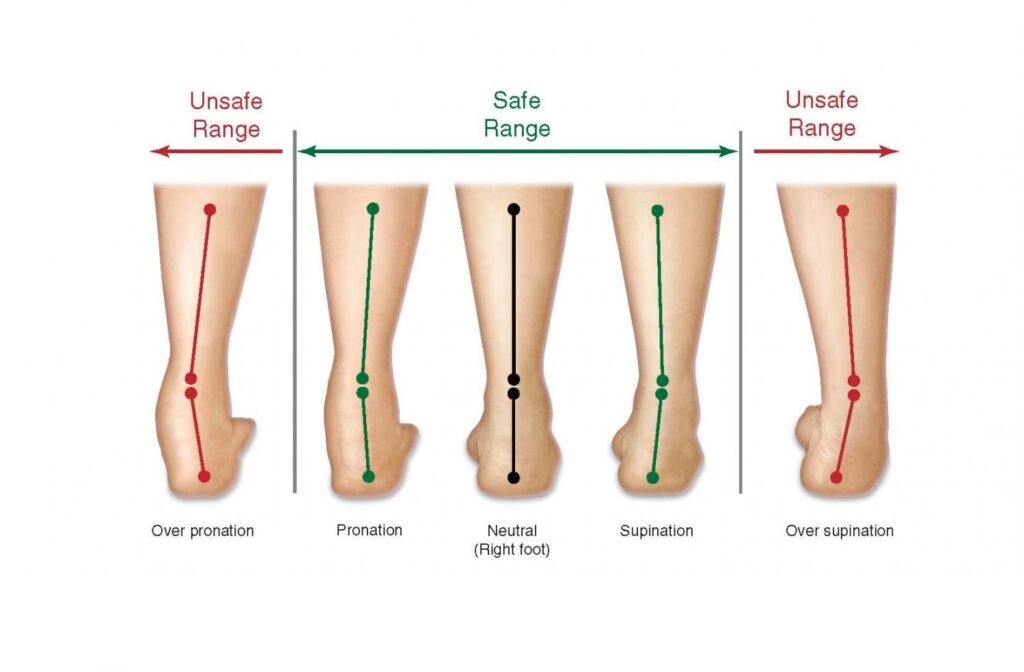When a foot is exposed to constant stress, calcium deposits build up on the bottom of the heel bone. Generally, this has no effect on a person’s daily life. However, repeated damage can cause these deposits to pile up on each other, causing a spur-shaped deformity, called a calcaneal (or heel) spur.
An inferior calcaneal spur is located on the inferior aspect of the calcaneus and is typically a response to plantar fasciitis over a period, but may also be associated with ankylosing spondylitis (typically in children). A posterior calcaneal spur develops on the back of the heel at the insertion of the Achilles tendon.
An inferior calcaneal spur consists of a calcification of the calcaneus, which lies superior to the plantar fascia at the insertion of the plantar fascia. A posterior calcaneal spur is often large and palpable through the skin and may need to be removed as part of the treatment of insertional Achilles tendonitis.

Symptoms
Major symptoms consist of pain in the region surrounding the spur, which typically increases in intensity after prolonged periods of rest. Patients may report heel pain to be more severe when waking up in the morning. Patients may not be able to bear weight on the afflicted heel comfortably. Running, walking, or lifting heavy weight may exacerbate the issue
Treatment
It is often seen as a repetitive stress injury, and thus lifestyle modification is typically the basic course of management strategies. For example, a person should begin doing foot and calf workouts. Strong muscles in the calves and lower legs will help take the stress off the bone and prevent heel spurs. Icing the area is an effective way to get immediate pain relief

Pronation and Supination
Abnormal pronation occurs when a foot pronates when it should supinate, or over pronates during a normal pronation period of the gait cycle. Approximately four degrees of pronation and supination are necessary to enable the foot to propel forward properly. In the neutral position, the foot is neither pronating nor supinating. If the foot is pronating or supinating during the stance phase of the gait cycle when it ought to be in the neutral position, a biomechanical problem may exist.
For ease of choosing corrective footwear, three types of pronation are recognized: neutral pronation, over pronation, and under pronation.
LLD
Unequal leg length (also termed leg length inequality, LLI or leg length discrepancy, LLD) is where the legs are either different lengths or appear to be different lengths because of misalignment.
The most common treatment for discrepancies in leg length is the use of a simple heel lift, which can be placed within the shoe. In cases where the length discrepancy is moderate, an external build up to the shoe is usually more comfortable